Cultivators: types, nuances of choice and instruction manual

Some gardening and earthworks are energy-intensive. In such cases, a cultivator comes to the aid of a person. In our article we will tell you what it is, how it works, we will consider the main criteria for choosing this type of technique.
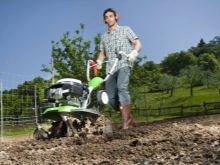
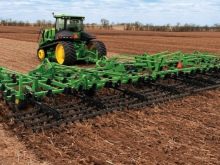
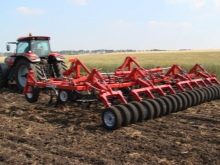
What it is?
Cultivators are machines whose purpose is to cultivate the land and level the plot. Subdivided into steam and row crops. The former prepare the soil before sowing, and the latter process them. With the help of cultivators, loosening, weeding, harrowing, irrigation, as well as hilling of agricultural crops are carried out.
There are mechanisms with passive and active cutters. In accordance with the type of drive, the mechanisms are divided into manual, conventional and cultivators with an aggregate, which is often a tractor. From the outside, it looks like a small harvester.
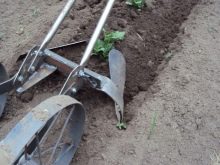
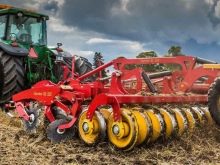
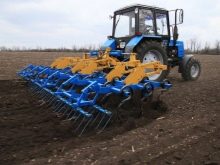
Cultivators can be used for several purposes. Here are the main ones: lancet, ploughshare, disc, milling, as well as forestry and motor-cultivators. Its purpose is power cultivation of the land.
A motor-cultivator differs from a walk-behind tractor in smaller dimensions, better maneuverability and the absence of a power take-off shaft. With its help, it is possible to cultivate the soil with almost no effort on inconvenient and hard-to-reach areas of land.
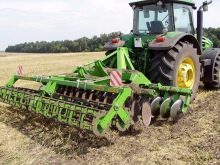
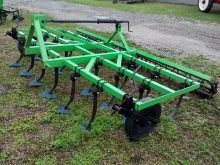

As a rule, cultivators are equipped with various types of compact engines: diesel, gasoline, as well as powered by a network or battery. The widespread use of aggregates is characterized by the specifics of the purpose. On this basis, they are divided into light, medium and heavy and, accordingly, semi-professional and professional.
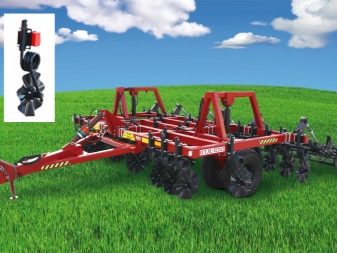
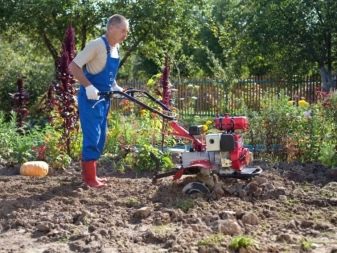
Types and models
All cultivators have their own classification, according to which they are divided according to the size of the power, which also includes the volume of productivity, as well as the amount of fuel consumed. Here is a small general overview of cultivator varieties.
By weight category
- Ultralight. The weight of the lightest structures reaches 15 kilograms. These are the most adapted mechanisms for working on personal plots and vegetable gardens, where the width of cultivation of the soil cover is rather narrow. They dig to a depth of 10 centimeters, the width of cultivation is 25-30 centimeters.
With the help of ultra-light cultivators, hilling, loosening and weeding are carried out, as well as care for flower beds, a garden and a lawn. It is also indispensable for greenhouse work.
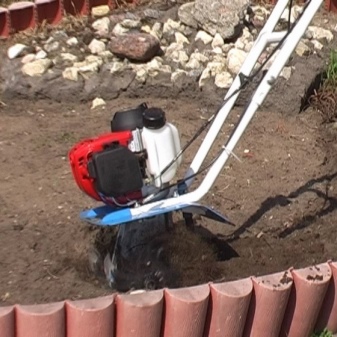
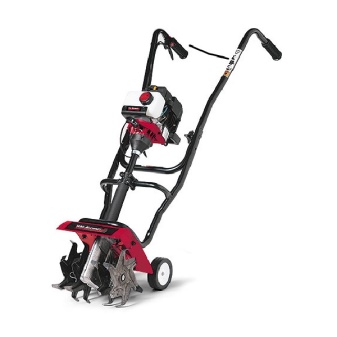
- Lungs. These cultivators work up to half a meter wide with a plowing depth of up to 20 centimeters. Their efficiency is higher than in ultralight models. The cultivation width allows the machine to be used on the plots. The weight of the device is 40 kilograms, the processing depth is up to 20 centimeters. It is good to use it in a small vegetable garden or in a garden.
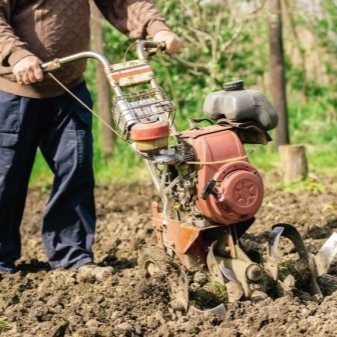
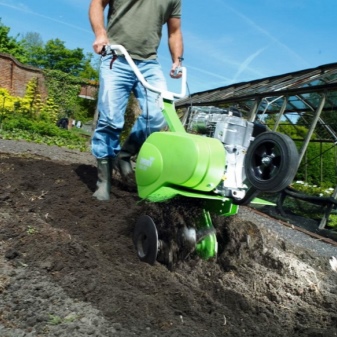
- Average. Cultivators have a surface coverage of 90 centimeters, dig to a depth of 20 centimeters and weigh about 70 kilograms. The robust design is capable of handling a large amount of farmland work.
- Heavy. The units are professional equipment, they are wide-cut, they are used on large plantations, virgin lands and land, as well as in the implementation of work on the landscape.
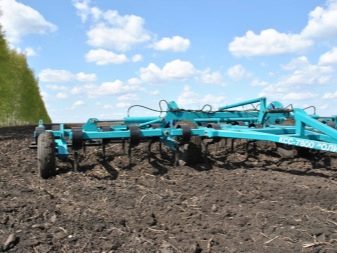
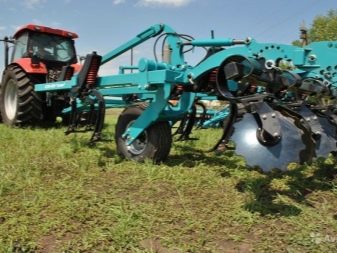
By engine type
- Gasoline cultivators used when performing a significant amount of work, where considerable energy consumption is required. Their maintenance, preparation and repair require large funds, so it is advisable to use them with a payback if necessary and justified.
Complex models of enormous power are needed not only in the agricultural business. They are often used in firefighting and other economic areas. Are aggregated to machines and tractors.
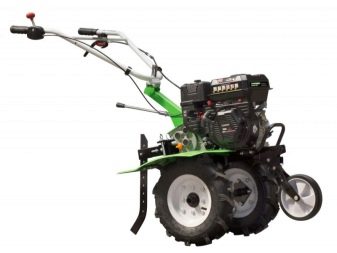
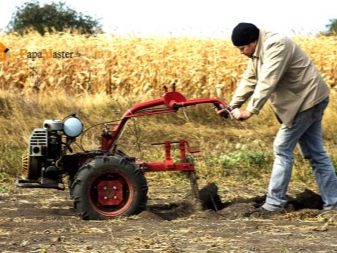
- Electric cultivators very convenient for work in the garden and garden, on the personal plot, where the footage of the extension cord allows.
- Internal battery models - a very convenient, compact and mobile version of cultivators.
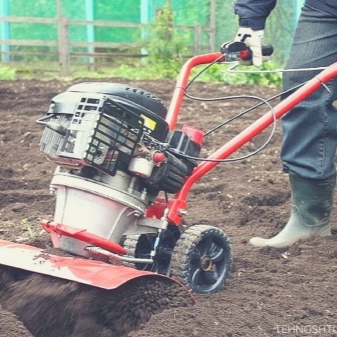
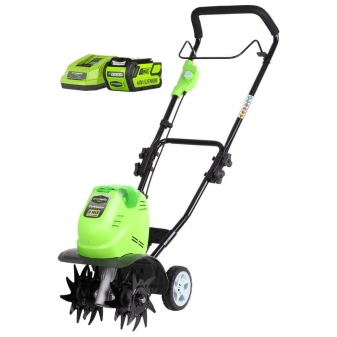
By type of drive
- Manual - fairly inexpensive and easy to use. They can handle very small areas of land. In addition, they are unsuitable for the treatment of difficult stony-clay soils.
- Motoblock, with more power, are able to cope with the processing of soil of any complexity.

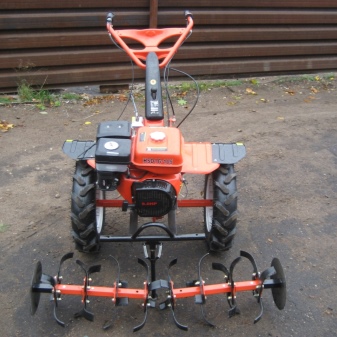
By type of work items
- ploughshare;
- milling (with passive or active cutting elements);
- disk;
- coulter;
- lancet.
There are two types of knives in milling models: they work due to their own drive or on the traction of the cultivator with the unit. Both those, and others produce plowing at the expense and with the help of the engine and dimensions.
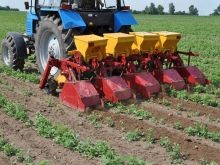
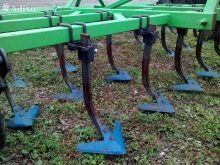
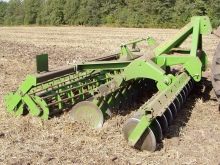
By type of land cultivation
- steam - intended for pre-sowing works;
- row-crop - carrying out the processing of crops.
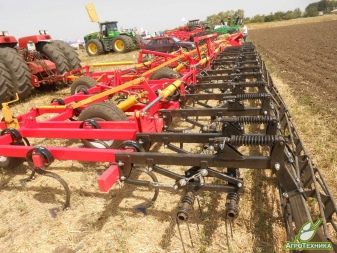
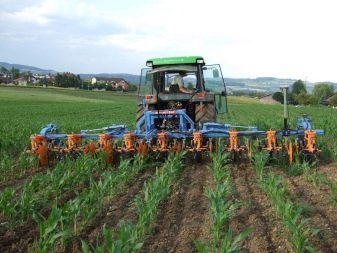
Each type of cultivator is a strictly specialized model of a narrow direction, designed to perform a number of functions. Let's consider some models of different cultivators.
- Garden shovel cultivator. Treatment and preparation of the soil cover consists of the main (deep), as a result of which the soil is plowed and milled, and additional - for loosening, compaction, as well as getting rid of weeds, root residues and stones. This is usually done with an ordinary shovel. But the process itself is not easy and requires energy. Especially to simplify the cultivation of the land, a miracle shovel was created, which is a manual mechanism operating on the principle of a lever, simultaneously dripping and loosening the soil without any additional effort.
This type of cultivator belongs to the amateur.
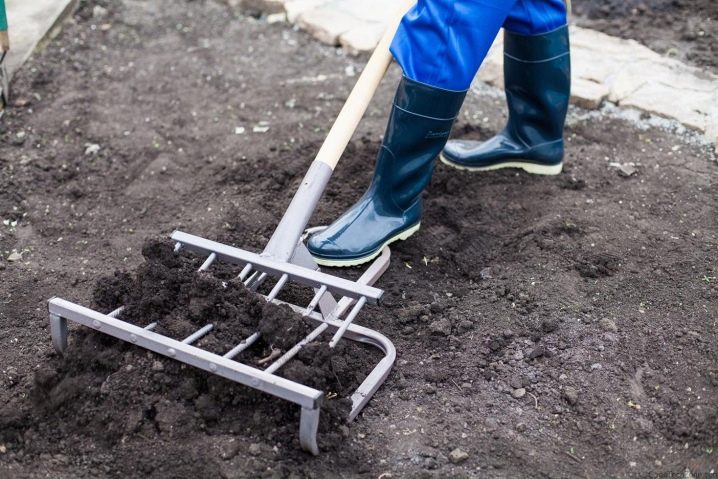
In this series of agricultural assistants, we will consider professional models - Specialists of domestic and foreign manufacturers working on the traction of the unit.
- PDA-8. This cultivator is trailed, aggregated to a third class tractor. It is used in the pre-sowing season, as well as in the processing of plantings. Designed for year-round operation in various climatic conditions. In the conditions of the Russian climate, it is used for the preparation of soils for industrial and ear crops of winter crops. Like all professional mechanisms, it needs maintenance and repair.
- KCH-4. The mounted stubble cultivator combines several functions: flush-free cultivation followed by the creation of a mulch cover. Used for stubble. Digging and loosening, leveling and mixing of the soil cover. Performs complex functions easily and unnecessarily.
It is also a cultivator for structure-restoring land cultivation, designed to work with autumn fallow lands without plowing and stubble removal.
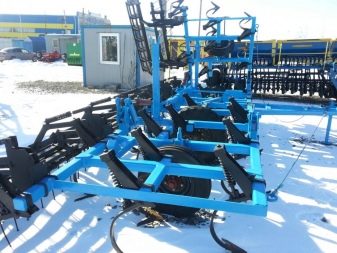
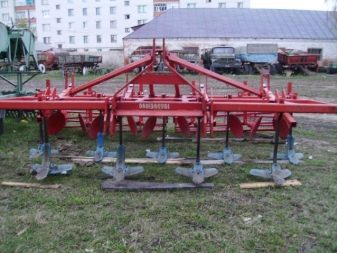
- KNK-8. The mounted combined cultivator is used in soil cultivation with subsequent packing and leveling. The principle of operation of the unit is based on new energy-saving technologies. The agricultural cultivator is equipped with a lateral plant feeder.
- KPP-8. The steam seeding cultivator is used for continuous tillage with leveling and compaction of the cloddy layer.
- AKSH-6. The combined wide-grip unit is designed for finishing the soil for planting agricultural crops. Among other things, it plows, levels, loosens and clears the soil from weeds and roots.

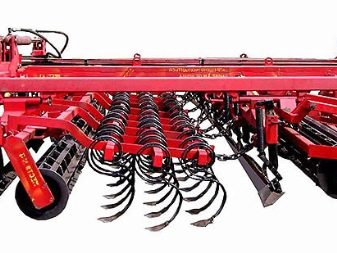
- Fokin's cultivator is a flat cutter that replaces several functional gardening tools at once: a hoe, a shovel, a scythe, a rake and other equipment. This invention of a domestic designer is considered universal, capable of performing versatile work, from plowing to mulching and hilling the soil. The cultivator is a semi-professional technique.
- Motoblocks "Hedgehog" contain special attachments - discs with spikes. They do an excellent job with weeds, rodents and hilling root crops. These samples can be used in areas of any size, from large fields to mini-vegetable gardens.
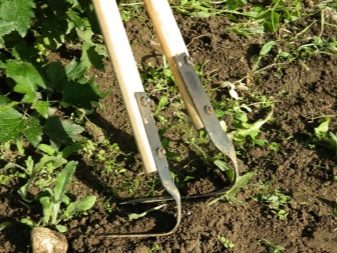
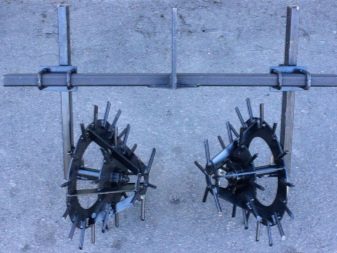
- Forest cultivators have their own specifics, working on particularly difficult forest areas - plots, restoring disturbed land productivity. Most often, this process is carried out after deforestation, mining, or in mines. They are forced to work in hard-to-reach rocky places with irregularities, stumps and bumps. Therefore, units of this type are created taking into account all the factors of complexity, including in the case of the transmission. In this case, they are placed on special forwarder machines with a complex model of computerized control. The mechanism operates by means of a basic machine system with a hydraulic manipulator.
There are two types of forest cultivators: rippers and mounders. The disc cultivator is involved in harrowing. A mechanical tiller looks like a tractor or a machine with attachments designed for strip loosening of the soil with simultaneous processing of the fallow, which is of no small importance for the growth of forest crops. This system is designed and implemented in accordance with the theory of micro-enhancements. This is the name of the eco-program for the creation of forest soil cover, which provides planting places with suitable conditions for this.
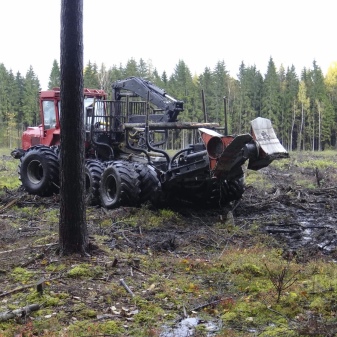
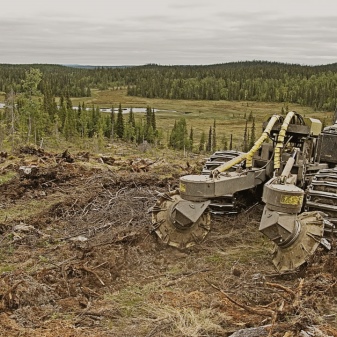
- Ridge formers are intended for the formation of ridges from the soil on the ridges to separate the row spacings from the rows. They are of several types: disc, hilling, with a comb-forming plate, with springs and milling.
- Another invention of professional equipment by Russian engineers - fire cultivator... It is used with special machines in agricultural production for weed control. Mainly for cleaning cultivated areas. A sophisticated system distributes gas from the burners in a safe manner that burns weeds without leaving any residue.
Thus, all types and varieties of cultivators have their own specificity and purpose. The choice of this technique should be strictly in accordance with its purpose and technical aspects.
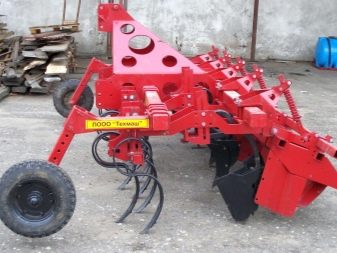
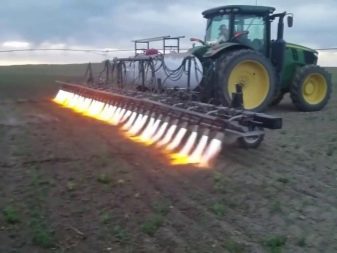
Specifications
The technical characteristics and operating principle of cultivators are made up of weight, power, plowing depth, number of speeds, grip volume and other indicators, including transmission.
A feature of cultivators is the placement of wheels in place of the cutters. For walk-behind tractors, installation is carried out directly on two shafts. Among motor-cultivators there are self-propelled units with their own shaft and wheels rotating against the course of the cutting segments. In this case, it is possible for the unit to "run away" forward, which is completely excluded in the work of cultivators.
Power is one of the main characteristics that affect the quality and speed of soil cultivation. High power makes it possible to significantly improve these indicators and reduce the time for performing technical tasks.In addition, additional working elements can be attached to large 4-meter powerful mechanisms, which, in turn, increases productivity. But this only applies to large volumes of work. In small areas, a powerful resource will be wasted.
As for electric mid-range models, the correct calculation of power allows you to avoid fires of wires and breakdowns, which often happen due to overloads.
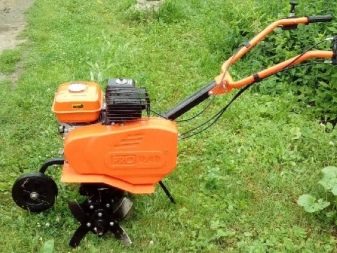
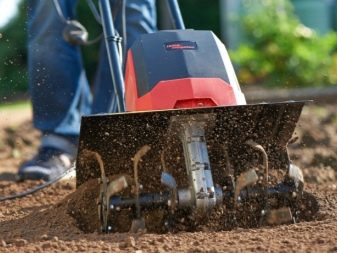
The working principle of cultivators depends on the weight of the structure, which is influenced by the size of the engine. The light models are equipped with an electric motor, the medium ones with a 2-stroke gasoline engine, and the heavy ones with a 4-stroke engine.
The unit needs weight in any case, because it is used to carry out power work on deepening and plowing. Heavy models are good for large volumes of work, and light ones are suitable for work in a personal suburban area.
Plowing volumes are also important when choosing a cultivator. Width, depth and length determine the working area in one pass. Mechanisms with small dimensions have a coverage width of no more than 30 centimeters, while large ones reach one and a half meters. Large ones are applicable on virgin soil and potato fields of an industrial scale, small ones are more suitable for work in gardens and vegetable gardens. By replacing the cutters with tires, you can transport various loads.

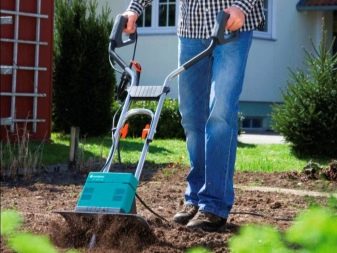
Accessories and attachments
Mechanisms for soil cultivation in most cases, in addition to standard replaceable knives, are equipped with attachments for various purposes. The productivity of cultivators depends on these devices. This is often:
- wheels with a seat, stabilizing the movement and movement of the mechanism;
- hiller with a device for preparing the soil for planting, as well as for loosening and hilling tuber crops;
- a plow, with the help of which roots are dug out of the ground, there are also ridge and double-sided models with a skimmer;
- a set of cutters for tilling, providing the processing of heavy types of soil and the creation of ridges;
- trolley for transportation of goods;
- nozzles for removing snow, mud and sweeping;
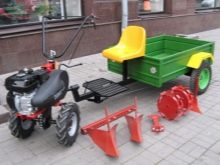
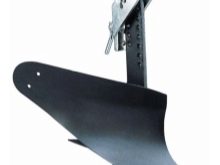
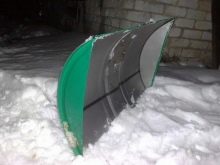
- a lawn rake that does not allow young growth to appear;
- mowing machine;
- soil hooks;
- aerator for creating conditions for air delivery to plant roots;
- pneumatic tires and wheel weights.
Numerous brands package their products in different ways. Therefore, it is important to decide on attachments in advance, since the price of the cultivator depends on this. The complete set for walk-behind tractors and cultivators is different. In some cases, it is more profitable to purchase walk-behind tractors, they are more functional than agricultural cultivators.

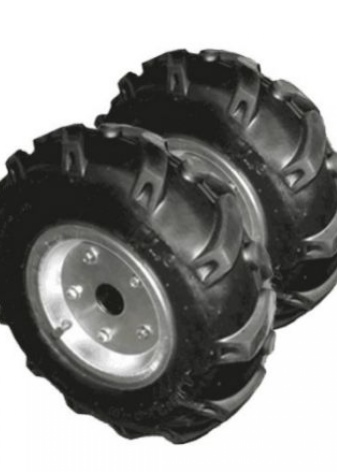
How to choose?
When the question is which cultivator to choose, you should trust the advice of professionals.
- Choosing a model with an electric motor, you should know that these models practically do not need special care, refueling and lubrication. They are small in size, compact, thanks to which they cope with the assigned tasks in small areas. Electric cultivators are safe to use, equipped with protection against electric shock and fire.
- Gasoline cultivators are a more complex mechanism, and you need to have basic skills working with them. Therefore, before purchasing a mechanism, you should read the instructions, study the rules of operation and maintenance. The quality and service life of a gasoline cultivator depends on the quality of the fuel, timely and competent service. Two-stroke cultivators are less expensive than their 4-stroke "siblings", but consume a lot more gasoline.
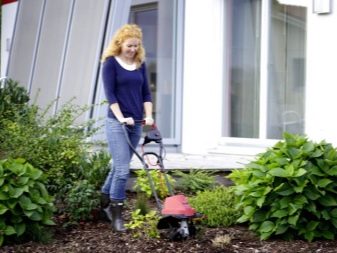
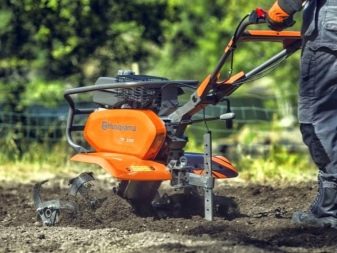
- It should be borne in mind that the characteristics in the passport indicate the depth of cultivation with the condition of working on medium soils. In the case of clay formations, these data may change.
- Soil coverage is considered one of the most important characteristics. So, the larger it is, the better for large land areas.In the case of small land plots, cultivators with a narrow grip are suitable. The width of the correct size is achieved by the correct installation of the cutters.
- The power of the unit affects its performance. The more powerful the engine, the more work can be done. This indicator affects the cost of the device.
- Some types of cultivators have additional functions: weeding, lawn edging, sweeping brushes, rakes and other equipment. Their presence significantly expands the functions of the unit.
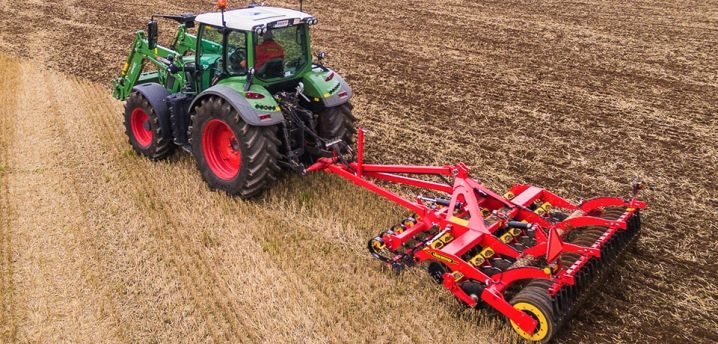
When choosing one or another cultivator, two main indicators should be taken into account: energy intensity and performance. The efficiency is calculated from the indicators of the treated soil surface per unit of time, which depend on the power and width of the cutters. The price of a cultivator is made up of its power. Inexpensive cultivators are more suitable for summer cottages.

Owner reviews
Based on feedback from cultivator owners you can put together a small set of tips for using them.
- The center of gravity of the device plays an important role in its operation. Its location is characterized by the location of the engine. The lower the better, as much less effort is required. The low position of the slider is typical for electric cultivators.
- The automatic centrifugal clutch enables the cultivator to idle if necessary. For example, when winding roots, grass and other debris on cutters. Only gasoline-powered cultivators have protection against seizure.
- To protect the cultivator from dirt, reusable filters are used, which, as they become dirty, are washed, lubricated and then reinstalled on the apparatus. Filters protect and, with proper care, greatly extend the life of the appliance.

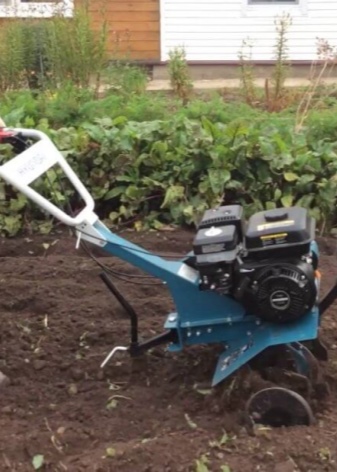
- Poor penetration and wear of the cutting elements can be the reasons for the poor-quality operation of the electric cultivator. To solve problems, you can install special weights or replace worn-out rotary tillers.
- Garden fertilizers and chemicals tend to have a negative effect on the cultivator. Milling cutters of mechanisms are especially affected. Therefore, before plowing, you should inquire about the presence of chemicals in the soil, and after work, rinse and treat the working surface of the device with special materials. Otherwise, corrosive substances can corrode the metal parts of the mechanism.
All basic aspects of operation are indicated in the instructions by the manufacturer.
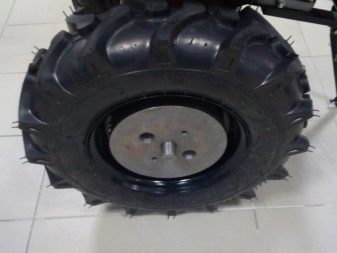
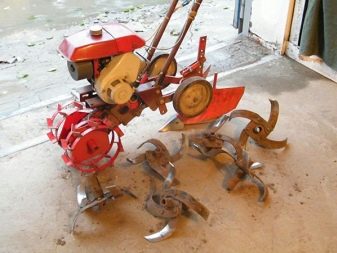
User manual
Before using the technique, you should carefully study the instructions, since the quality of work depends on the technical aspects of the device.
For example, according to the instructions of the "Mole" garden cultivator, the model is equipped with a 4-stroke gasoline engine of 2.6 liters or more, with a volume of 60 cubic meters. centimeters and 6000 rpm. The device has a steering wheel, with the help of which control is carried out, mechanisms for clutching and controlling the carburetor ("K-60V"), an electronic contactless ignition engine.
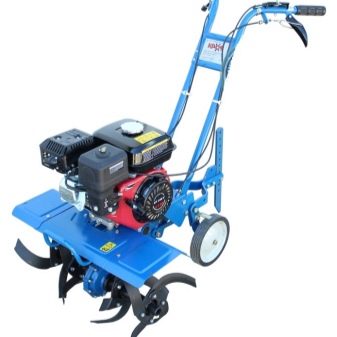
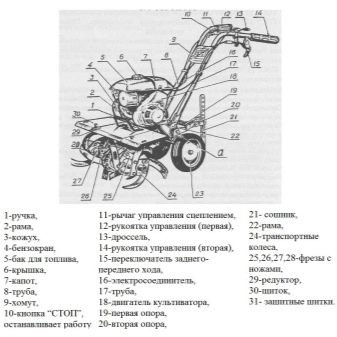
The instruction provides for the implementation of earthworks by the apparatus using attachments.
- Treatment of the soil cover due to blade cutting mills applied to the shafts. In the process of work, the support rises, and the opener is taken to work, measuring the required depth. The cutters rotate due to the operation of the engine. The standard set includes external and internal milling cutters.
- The cultivation of weed lands is carried out with floor milling cutters, also included in the kit. If necessary, purchase discs for cultivating planted crops.
- Root crops are spud with a special nozzle intended for these purposes. According to the instructions, it is placed on the opener, spud without cutters. Instead of them, lugs are installed (not included in the kit).
- With the help of these disks and diggers, they also dig out roots and harvest.
- They cultivate the land with a plow.
- They mow the grass with a special mowing machine.
- Pumping out liquids.
- With the help of a cart or trailer, loads weighing up to 200 kg are transported.
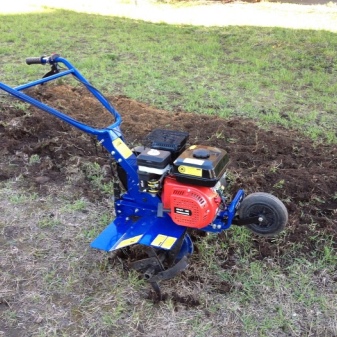
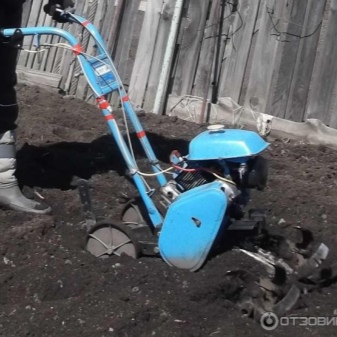
When servicing any cultivator, in order to avoid breakdowns, the device should be promptly cleaned, lubricated, and filled with fuel into the engine.
The engine must be run in immediately after purchase. The instructions indicate the running-in period, when the parts enter the operating mode, rub against each other.
When replacing the engine, the advice is to follow the instructions strictly. You can do this yourself by fulfilling all the conditions of this replacement. First you need to drain the oil and disconnect the cable. Then, after unscrewing a few nuts, dismantle the motor. Having tried on a new one, make holes for fastening (if necessary).
The new engine is installed and set up for operation. Often they use Chinese engines instead of "native" ones. According to the instructions, you can repair and adjust the mechanism yourself, install new candles and other spare parts if necessary, as well as maintain, store and operate the cultivator.
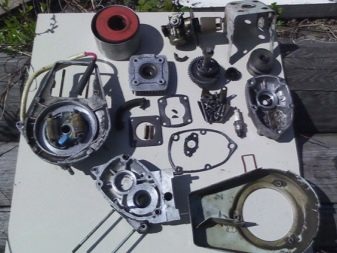
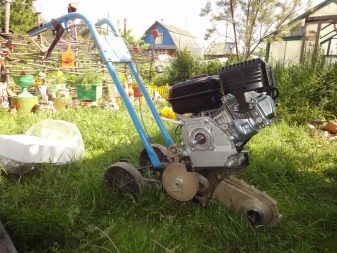
By regularly checking and cleaning the elements of the mechanism, one can hope for its long-term operation. Considering all the nuances of choosing and operating a cultivator, you can really count on a well-done job with a good result.
For information on how to choose a cultivator, see the next video.



































































The comment was sent successfully.